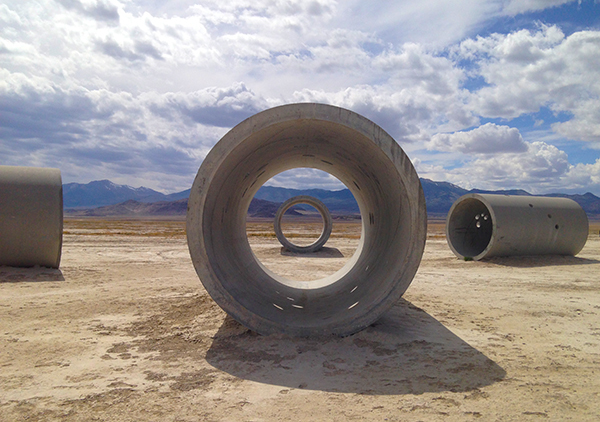Dublin Core
Title
Description
Sun Tunnels, an art installation by Nancy Holt, has become a unique part of Utah’s heritage.
On June 21, 1976, the day of the summer solstice, New York artist Nancy Holt gathered several friends under the massive skies of Utah’s west desert to celebrate the completion of her new art installation. Called Sun Tunnels, the artwork would become Holt’s most iconic contribution to the national “Land Art” movement.
The “Land Art” movement emerged from the social upheaval of the 1960s. Artists who balked at the confines and commercialism of the art market, hoped to change the way people thought about and experienced art by taking it outside. Far more than outdoor sculpture, land art evolves from a specific landscape, and compels visitors to interact, think, and feel. The movement was also rooted in the growing ecological consciousness of the 1960s that had many people questioning their place in the natural world. Nancy Holt acknowledged the impact on her own perspective of the 1969 moonshot. She said, “Once we could see pictures of the Earth from the Moon, suddenly it became very real that the Earth was finite … [and] that we had to start thinking intelligently about how to be … Nature’s agent.”
Holt and her husband, fellow artist Robert Smithson, made the vast open spaces of the American West their new canvas, and created two important artworks in Utah. Smithson’s Spiral Jetty was built in the Great Salt Lake during 1970, while Holt’s Sun Tunnels was completed six years later.
Sun Tunnels consists of four HUGE concrete pipes placed in a large X on the remote desert floor. The pipes are aligned precisely to frame the sun as it passes the horizon on the two solstices. Holes bored into the pipes in the pattern of constellations bring the stars inside the shady tunnels during the dazzling daylight. When viewed through the tunnels, the overwhelming sky, mountains, and desert are brought “back to human scale.”
In the years since its construction, thousands have journeyed to Sun Tunnels to experience firsthand Holt’s ideas about perspective and the passage of time. In the process, this major land artwork has become a unique part of Utah’s heritage.

